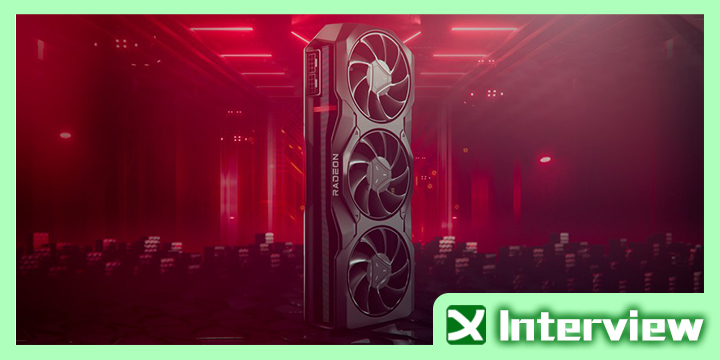After the launch of AMD Radeon RX 7900 series graphics cards, David Wang, Senior Vice President of Engineering Department of AMD Radeon Graphics Technology Group, accepted a special interview with online media, deconstructing the RDNA 3 architecture and how the innovative chiplet chip design works on the Radeon RX 7900 series Increased performance per watt in graphics cards allows even small chips to take advantage of them.
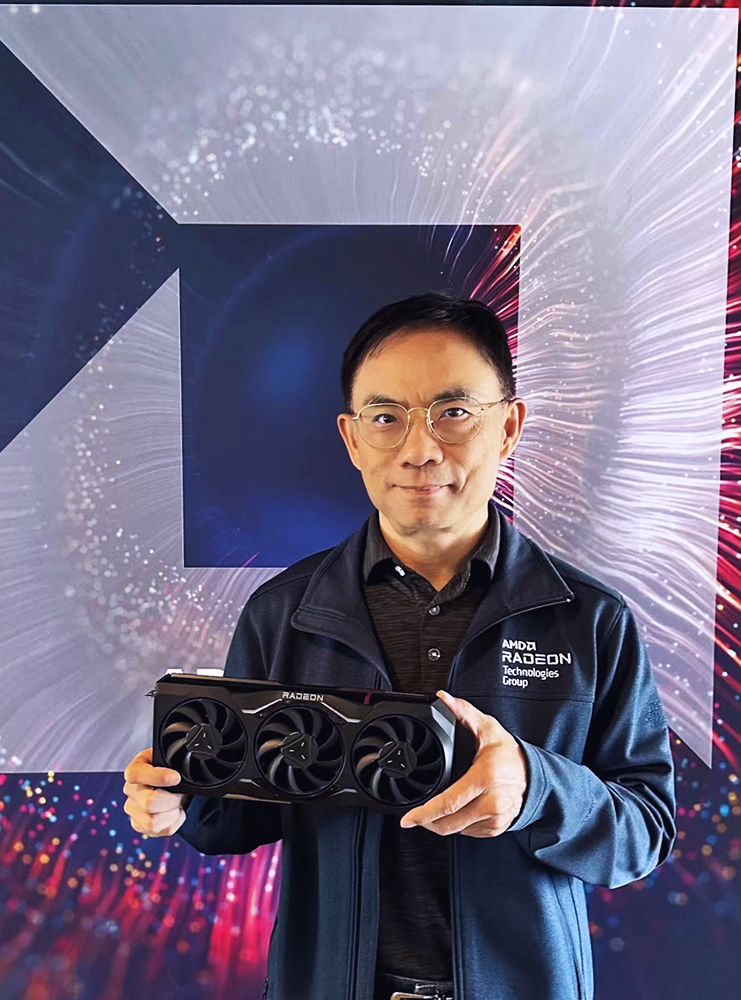
↑ David Wang, Senior Vice President of Engineering, AMD Radeon Graphics Technology Group.
The new generation of AMD Radeon RX 7900 series graphics cards not only adopt advanced Chiplet small chip packaging technology, but also enable AMD to choose the correct semiconductor process technology to achieve this performance per watt goal. The GPU core GCD uses the most advanced 5nm process to ensure performance and power consumption, while the memory controller and Infinity Cache use the more mature 6nm process to build MCD, and the integration of 5nm GCD and 6nm MCD allows RDNA 3 to have 58 billion A staggering number of transistors.
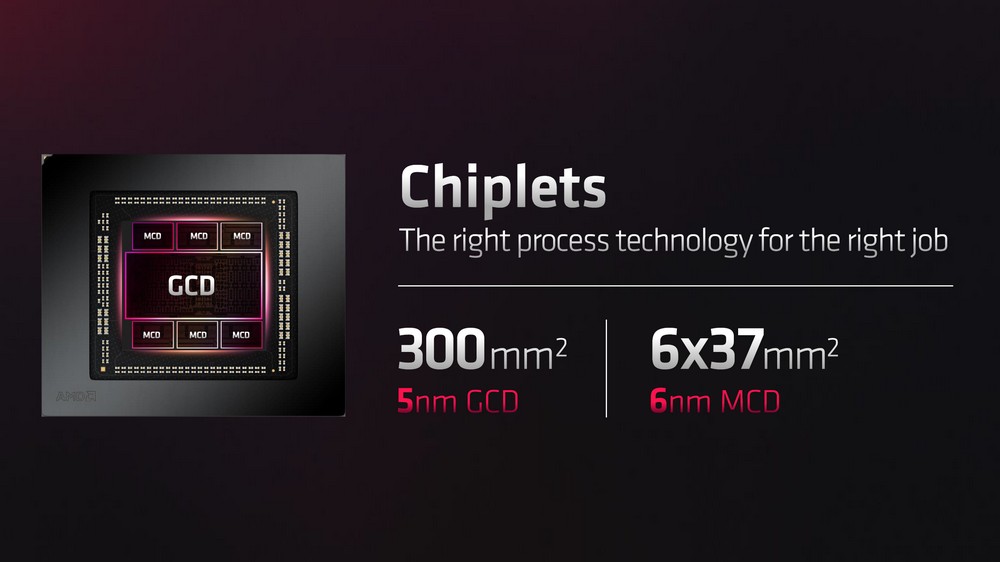
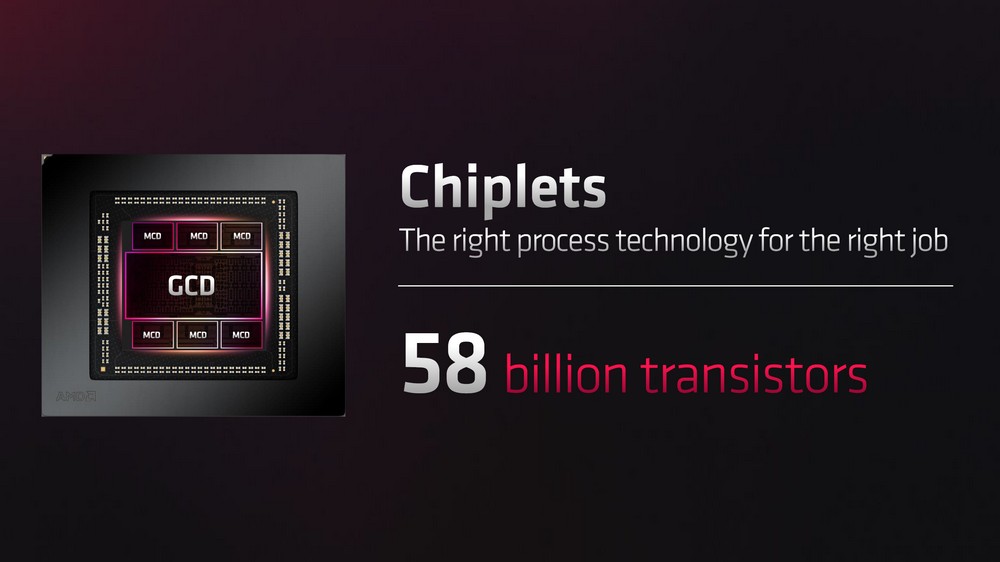
In the past, AMD was the first to try to launch GPUs using HBM memory in consumer products, but why didn’t AMD use GDDR6X high-speed memory this time?
Wang Qishang explained that the reason is actually that among 6nm MCDs, the second-generation Infinity Cache used by AMD RDNA 3 can effectively help the GPU temporarily store more data, so AMD does not need to use high-power and expensive GDDR6X memory. Connecting to GCD through Infinity Fabric can achieve a 2.7x bandwidth increase, and the total memory bandwidth can reach 5.3TB/s.
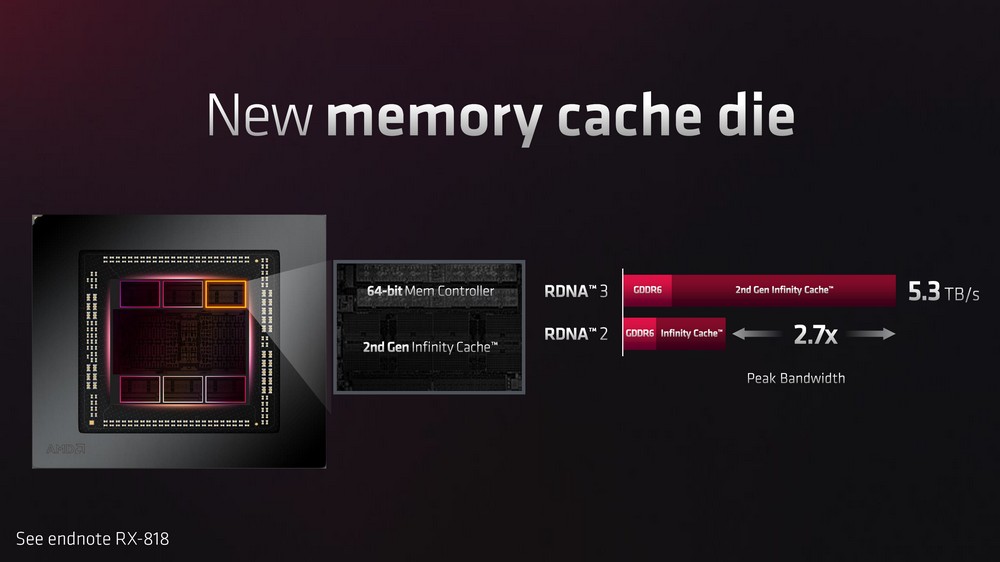
At the same time, RDNA 3 brings a new Graphics Compute Die (GCD) design, including a unified RDNA 3 computing unit, a new Display Engine display engine, and a new Dual Media Engine. The new-generation core has a Dual issue SIMD unit, which can double the instruction sending rate, flexibly handle FP, Integer, AI and other operations, as well as AI accelerators and second-generation ray tracing accelerators.
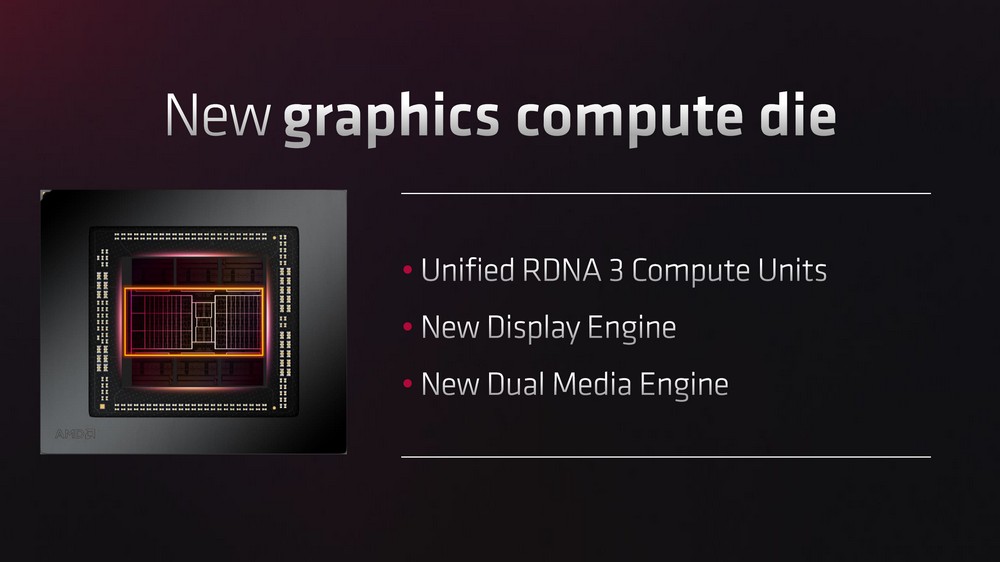
The newly added AI accelerator, each CU has 2 AI acceleration units, which can bring a 2.7x improvement in AI performance. The second-generation ray tracing acceleration technology can increase the ray tracing performance of each CU by 50%, and has newly designed instructions, Ray Box Sorting and Traversal.
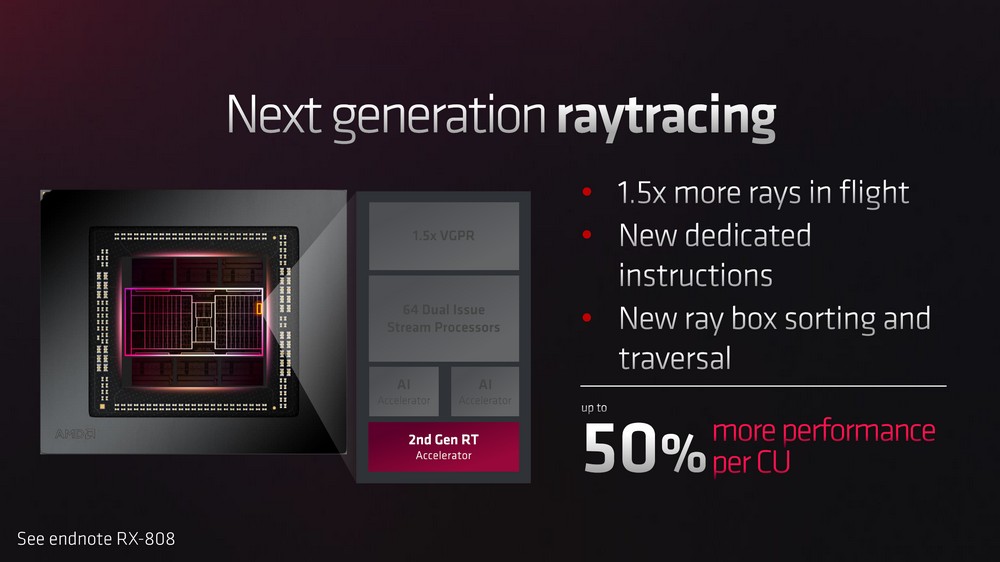
In order to improve the performance per watt, RDNA 3 uses Decoupled Clocks, so that the front-end of the GPU has a higher 2.5GHz clock frequency, which can process instructions and command distribution faster, while the GPU Shader runs at 2.3GHz to maintain high energy efficiency. frequency, which can save 25% of power consumption and 15% of the clock frequency increase.
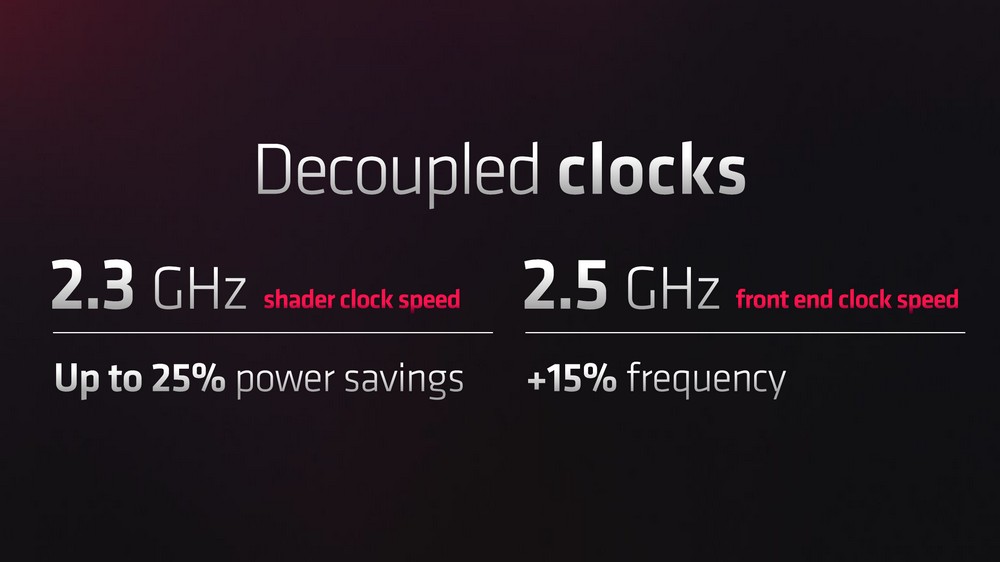
Wang Qishang also specially introduced the new AMD Radiance Display engine in the RDNA 3 architecture, which will support the latest DisplayPort 2.1 display output specifications in the industry. The display bandwidth can reach 54 Gbps, and the ultra-high specifications of 8K165Hz and 4K480Hz are lit, and 12bit per channel Color Renders up to 68 billion colors. This generation also uses dual media engines. In addition to the original AVC / HEVC codec, it also adds AV1 encoding and decoding functions to support up to 8K60Hz, as well as AI-accelerated audio and video encoding functions.
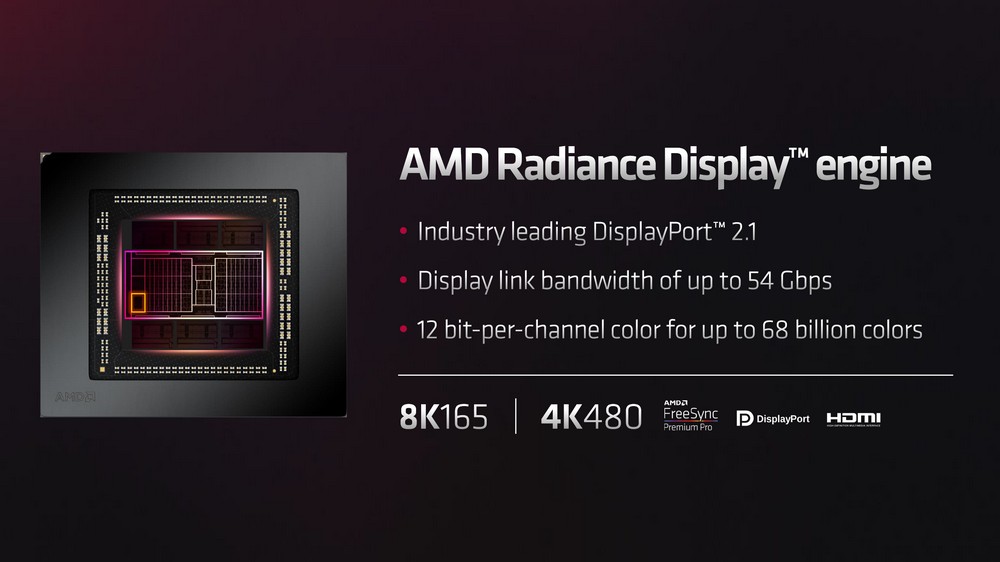
Wang Qishang added that the dual media engine technology can support two codec streams at the same time, bringing great assistance to content creation. Same as the AMD Radiance Display engine, the dual media engine supports the latest AV1 encoding, and with the help of a 1.8-fold increase in engine efficiency, it can save half the encoding and decoding time.
From the engine technology launched by AMD, it can be seen that AMD has fully considered games, content creation, and documents, and met the needs of all parties with continuous improvement in efficiency and technical support.
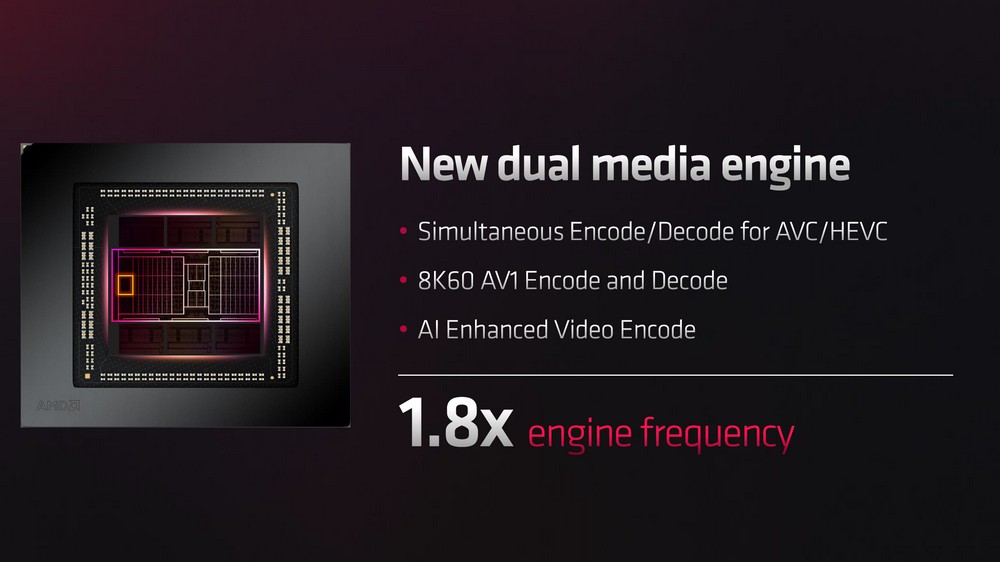
During the press conference, AMD also announced the cooperation with 3DMark to launch the functional test project of “FidelityFX Super Resolution feature test.
In fact, AMD has always had a good cooperative relationship with UL Benchmarks, the developer of 3DMark, and 3DMark has launched exclusive test scenarios for DLSS, XeSS and other functions, and extended support to AMD FidelityFX Super Resolution (FSR).
3DMark will use FSR 2.2 technology to provide players with the ability to test FSR performance and compare image quality, so that players can better understand the performance improvement and image quality comparison brought by FSR technology.
Today, the open source acceleration technology FidelityFX Super Resolution has been supported by as many as 216 games. The main reason is that FSR uses open source acceleration technology that does not limit GPU hardware, and the number of games using FSR 2 has also been upgraded to 85 games. Many gamers can personally experience the acceleration experience brought by FSR.
In addition, AMD will launch the latest FSR 3 update in 2023, introducing Fluid Motion Frames supplementary frame technology into the FSR 2-based technology, which can double the game performance and bring gamers a new era of GPU acceleration.
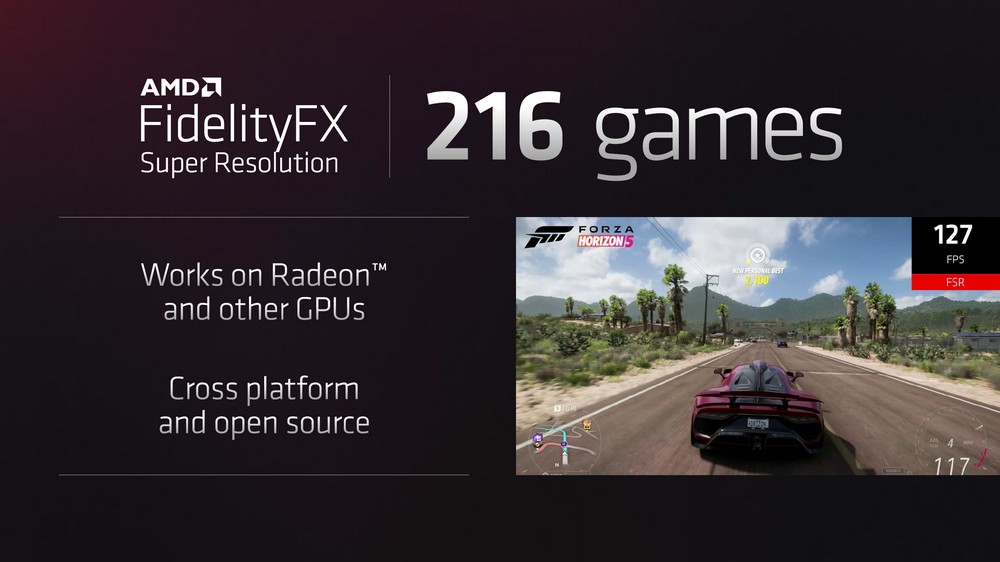
Speaking of FSR, Wang Qishang also shared the update of AMD Software Adrenalin software, including the AMD HYPR-RX one-button preset operation function that will be launched in the first half of 2023, which can open multiple AMD Software functions at the same time with one button, including AMD Radeon Anti-Lag, AMD Radeon Boost, and AMD Radeon Super Resolution allow these features to work simultaneously, reducing latency and delivering up to 85% better performance than the initial settings. HYPR-RX will be compatible with AMD Radeon RX 7900 series graphics cards at launch, and will not support Radeon RX 6000 series or previous graphics cards for the time being.
This year, the three major GPU manufacturers all launched GPU products with new architectures. At the same time, it can be seen that under the trend of hybrid rendering, GPUs must simultaneously process rendering, ray tracing, computing and other instructions, while opponents have used Thread Sorting Unit and Shader Execution Reordering optimization mechanisms to improve efficacy.
AMD did not adopt this method of mixing ray tracing and ray rendering. After all, from RDNA 2 to RDNA 3, the performance and efficiency of ray tracing have made great progress, so there is no need to adopt a hybrid approach.
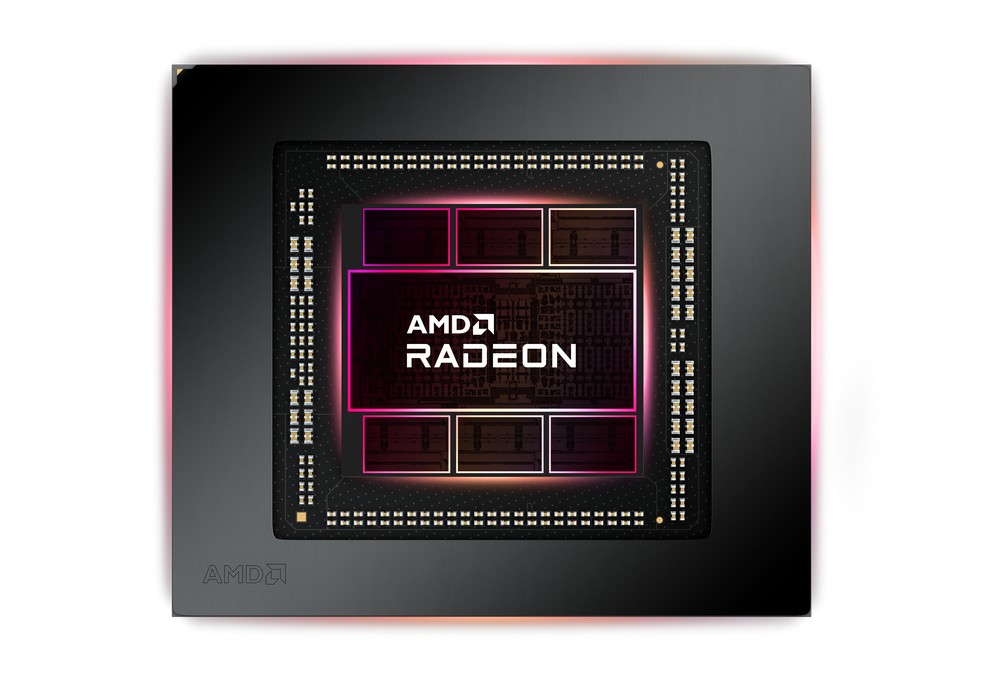
Speaking of graphics card power consumption, AMD Radeon RX 7900 XTX requires 355W for its TBP. Compared with the 335W TBP of the previous generation RX 6950 XT, only 20W has been increased in exchange for 61 TFLOPs single-precision computing performance and 123 TFLOPs half-precision computing performance. , the theoretical performance can be increased by as much as 2.57x times that of the previous generation.
Wang Qishang pointed out that when AMD designed the Radeon RX 7900 series graphics cards, it hoped that performance and power consumption could reach a balance point to bring better performance to gamers and the market, and designed the flagship Radeon RX 7900 XTX within a certain power range Therefore, players do not need additional adapter power connectors, and only need the standard dual PCIe 8-pin power supply to achieve high-performance graphics card expectations.
In terms of pricing, Radeon RX 7900 XTX corresponds to GeForce RTX 4080. Currently, GeForce RTX 4080 is priced at NT$42,990~49,990 in Taiwan, while Radeon RX 7900 XTX has more memory and higher memory bandwidth. There must be better performance.
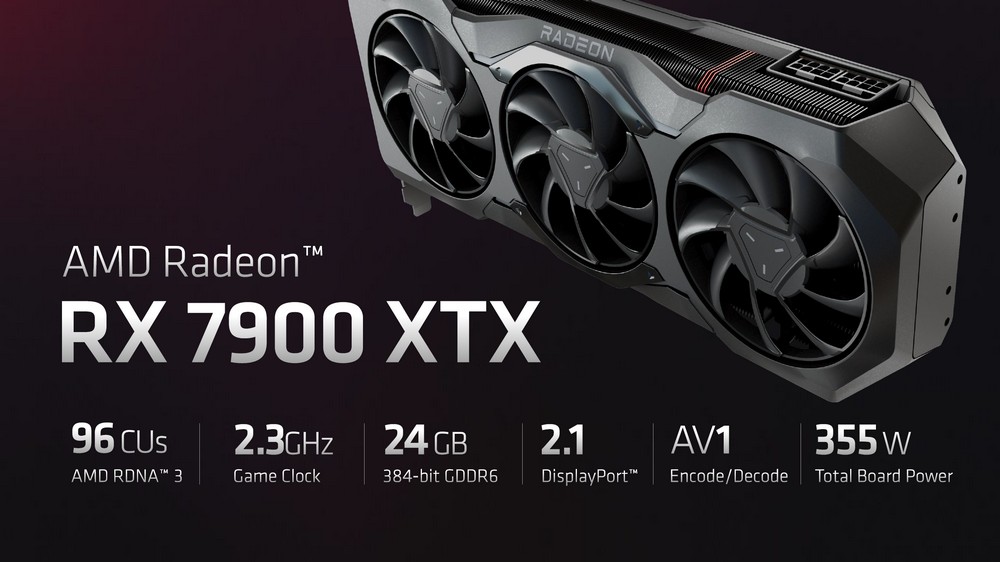
Through this presentation and interview, it is not difficult to understand how much the next-generation performance leap brought by AMD’s new-generation RDNA 3 architecture is. After the launch, you will be able to experience the rapid gaming power of AMD Radeon RX 7900 series graphics cards. Please look forward to 12 Unlock AMD’s excellent gaming performance on March 13!
Previous article: AMD Radeon RX 7900 series graphics cards are designed with chiplets and a new generation of RDNA 3 architecture dominates the performance per watt
Further reading:
